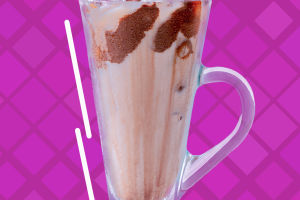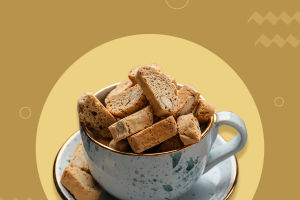Ice cream is a sweetened frozen food typically eaten as a snack or dessert. It may be made from milk or cream and is flavoured with a sweetener, either sugar or an alternative, and a spice, such as cocoa or vanilla, or with fruit such as strawberries or peaches.
Food coloring is sometimes added, in addition to stabilizers. The mixture is cooled below the freezing point of water and stirred to incorporate air spaces and to prevent detectable ice crystals from forming. The result is a smooth, semi-solid foam that is solid at very low temperatures (below 2 °C or 35 °F). It becomes more malleable as its temperature increases.
The meaning of the name "ice cream" varies from one country to another. In some countries, such as the United States, "ice cream" applies only to a specific variety, and most governments regulate the commercial use of the various terms according to the relative quantities of the main ingredients, notably the amount of cream. Products that do not meet the criteria to be called ice cream are sometimes labelled "frozen dairy dessert" instead. In other countries, such as Italy and Argentina, one word is used for all variants. Analogues made from dairy alternatives, such as goat's or sheep's milk, or milk substitutes (e.g., soy, cashew, coconut, almond milk or tofu), are available for those who are lactose intolerant, allergic to dairy protein, or vegan.
Ice cream may be served in dishes, for eating with a spoon, or licked from edible wafer cones. Ice cream may be served with other desserts, such as apple pie, or as an ingredient in ice cream floats, sundaes, milkshakes, ice cream cakes and even baked items, such as Baked Alaska.
Ice cream's origins are known to reach back as far as the second century B.C., although no specific date of origin nor inventor has been indisputably credited with its discovery. We know that Alexander the Great enjoyed snow and ice flavored with honey and nectar. During the Roman Empire, Nero Claudius Caesar (A.D. 54-86) frequently sent runners into the mountains for snow, which was then flavored with fruits and juices.
Legend has all sorts of fanciful stories about Marco Polo bringing ice cream from China and Catherine de' Medici introducing it to France and King Charles I having his own personal ice cream maker; all wonderful stories, but sadly there is not a scrap of historic evidence to back up any of these legends. Marco Polo didn't introduce either ice cream or pasta to Europe and worse still, he probably never even went to China. Most of these myths seem to have been introduced by the Victorians.
The earliest evidence of anything approaching ice cream being made was in China in the Tang period (A.D. 618-907). Buffalo, cows' and goats' milk was heated and allowed to ferment. This 'yoghurt' was then mixed with flour for thickening, camphor (yes camphor!) for flavour and 'refrigerated' before being served. King Tang of Shang had a staff of 2,271 people which included 94 ice-men.


